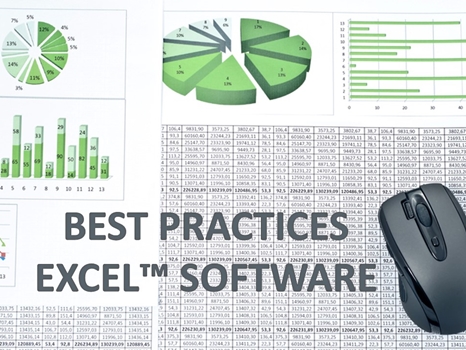

Simulations included in courses
The courses in this section are all focused on using the tools we employ as part of our courses. These are embedded as part of the workbooks we make available, but you can repurpose these workbooks and create custom workbooks you design for products or services you develop independently. There are several prepared workbooks that you can work with, each pre-defined with the appropriate VBA macro code to perform standard operations. Beyond the basic course derived software we have VBA macro applications in project management, quality assurance, and other applications that are available as well.
The intent of this section is to help you to explore how you can create unique applications built around the core functionality that we have already prepared. Sometimes it is just a matter of stripping down an existing application and replacing the underlying worksheet logic with something that is totally new (as opposed to a customized presentation that essentially uses the original workbook as a starting point). If you have specific applications that fall into this category then exploring the pre-written logic can provide a quick and easy starting point. If you decide to develop your own workbooks with embedded VBA Software you may want to consider getting in-depth knowledge of how to program Excel™ workbooks based on our training courses:
Best Practice Excel™ Software – Developing Excel™ VBA Software
Excel™ Cell Formulas – Introduction = this is an Excel™ course that is focused on customizing the worksheet functionality with cell formulas that can deliver a lot of power if you know how that is done.
Excel™-VBA - Worksheet Macros = this next level Excel™ course goes on to demonstrate how to use the built-in Macro Capture capabilities in order to get a start in VBA programming, where the macro is stored as an executable subroutine that performs a single function. We show how you can explore a macro that is produced by Excel™ and transform the VBA code into a routine that can be embedded into a full-fledged VBA application (that, by the way, is still considered a macro by Excel™).
Excel™-VBA – Programming = this is a course in VBA logic programming, that enables you to build more complex logic to perform many unique tasks. We show “handy” routines, tools, and techniques to get you started on custom solutions to automate your internal processes using Excel™.
Excel™-VBA - Data Management = this final course details how to use the Excel™ workbook as a database and develop logic to perform extremely complex processing.
Excel™ Simulation Engine BPES_SIM
The “Excel™ Simulation Engine” is a VBA macro designed to execute workbook calculations after inserting different combinations of input values, and then saving the results in successive output columns that it can sort by “priority” based on user-selected target values that can be maximized (or minimized). If can also discard results based on out-of-bounds conditions. We use this in a number of analysis tools, but there are many unique applications where the same abilities might provide capabilities for optimizing production or staffing levels or many other applications that can be represented in an Excel™ worksheet model, but that require an iterative approach until the operational “sweet spot” has been identified. This engine is used to drive the marketing plan and business plan models explained elsewhere on this website.
Excel™ Projection Engine BPES_PRO
The “Excel™ Projection Engine” is a VBA macro designed to execute workbook calculations based on growth rate parameters (linear or non-linear). It runs through selected data rows on to apply the growth parameters and lets Excel™ cell formulas calculate the dependent data values. It has the ability to save the results in successive output columns that it can sort by “priority” based on user-selected target values that can be maximized (or minimized). If can also discard results based on out-of-bounds conditions. We use this in a number of analysis tools, but there are many unique applications where the same abilities might provide capabilities for optimizing production or staffing levels or many other applications that can be represented in an Excel™ worksheet model, but that require an iterative approach until the operational “sweet spot” has been identified. This engine is typically used to find the risk of major shifts in underlying data, as applied to our Financial Planning & Budgeting model.
Excel™ Demonstration Engine BPES_DEM
The “Excel™ Demonstration Engine” is a VBA macro designed to execute workbook calculations based on specific case data that may have been produced with the help of the simulation engine or the projection engine. The goal is to be able to recast specific case data, and then to present those data by establishing focus on selected parts of the worksheet (similar in nature to the way you might use PowerPoint). Because we can select different cases we can reflect the results for those individual examples, a great tool for teaching, but also to present the outcome of other simulations to an executive audience after preparing the material for enhanced viewing.
Excel™ Data Management Engine BPES_DME
One of the challenges we may face is to pick data apart from different sources in order to create an underlying worksheet representation that we can work on. This engine can work by using the interface files produced by applications (comma- or tab delimited data) to organize the data into a layout you can work with, and also report-image files where the software can position itself by using keywords to identify the content of report files that must be converted to a worksheet.
 |
|